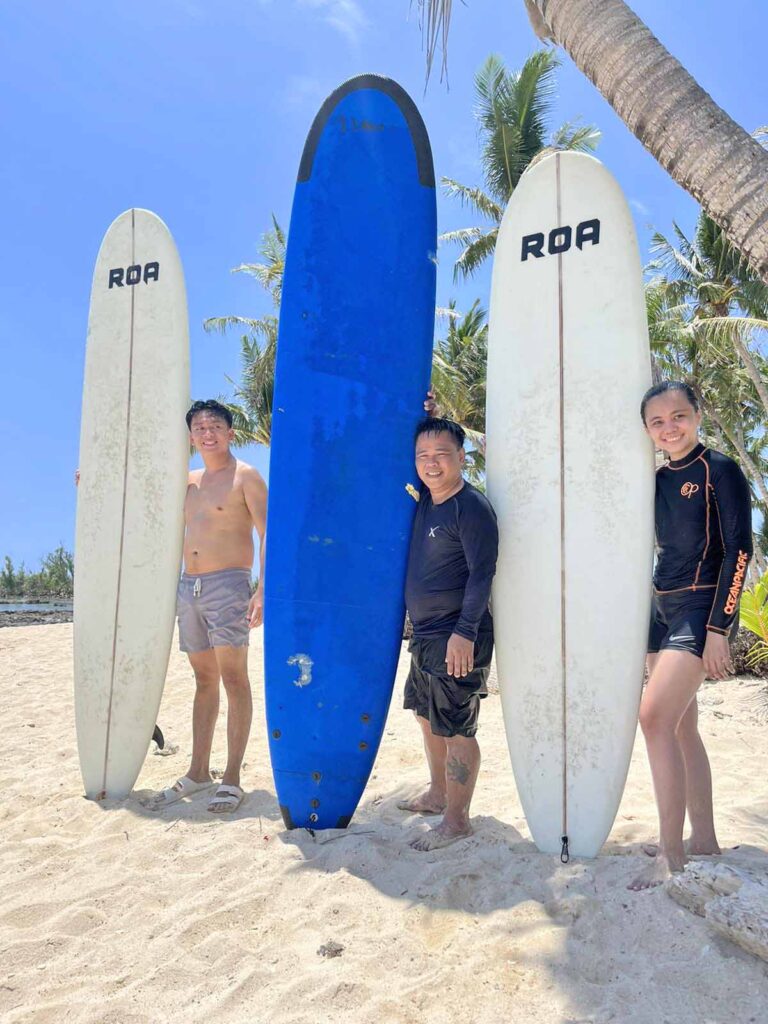If everybody had an ocean, then everybody would be surfin’ like a Siargaonian.
It’s very easy to fall in love with Siargao, a small, tear-drop-shaped island in the southern part of the Philippines. For years, the island has been attracting surfers from across the world, and more recently, honeymooners. Indeed, we met several couples spending their post-wedding bliss in Siargao.
I visited Siargao in May upon the invitation of Kenneth Shaw, the owner of Siargao Town Center, to chronicle the redevelopment of the island after the twin devastations from the December 2021 super typhoon “Odette” and more than two years of strict lockdown brought by the Covid-19 pandemic.
The visit was supposed to be all work, butt, no, no, no way. On our last day in Siargao, the Daily Tribune team — with me were Spaces editor Pauline Songco and creative director Alvin Kasiban — dipped into the waters and tried, of course, surfing.
Rising a wave
The term surfing refers to a person riding a wave using a board, regardless of the stance.
It dates back to 2,000 B.C., according to research by the University of Hawaii, although the first evidence of bodysurfing event was recorded in 1899 when Australian Fred Williams learned of the sport after receiving training from Polynesian islander Tommy Tana.
The Moche of Peru would often surf on reed craft, while the native peoples of the Pacific surfed waves on alaia, paipo and other such watercraft. Ancient cultures often surfed on their belly and knees, while the modern-day definition of surfing most often refers to a surfer riding a wave standing on a surfboard; this is also referred to as stand-up surfing.
From a pastime, it gained popularity as a sport in the Western world and evolved significantly. It was originally called “Heenalu” by the Hawaiian natives.
Courage and a board
The sport of surfing involves riding waves in an upright or prone position. You need a breaking wave, courage and a board. Although the concept is simple, the practice is not.
Surfers need to catch the waves and glide across the surface of the water until it loses energy or break. Often, surfers are towed in the surf line or paddle in the area of open water to catch the waves’ break. There, you have to sit on your board and take the opportunity when the waves roll into the shore.
In Siargao, the best surfing spot is, of course, Cloud 9. The best time of the year to go there is between September and November or during the rainy season when waves can go as high as 12 feet.
You will need to hire an instructor.
Word of advice, listen to your instructor. Just listen and follow everything he teaches you.
For P500, the instructor will teach you the basics of surfing, tow you to the surf line and guide you for an hour of in-person skills training. If you want to document your surfing experience, you have to shell another P500 to hire a “videographer/photographer” to capture your moments on the board.
Truly, there is no word to describe the magic and beauty of Siargao. The island has so much more to offer than surfing. The wealth of serene beaches, crystal clear Maasin River, beautiful mountain landscape and some of the friendliest and most accommodating people. I can’t wait to book my next trip.
